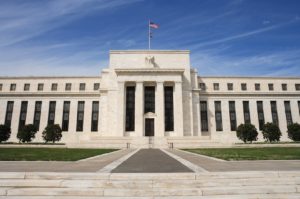
The Federal Reserve Act of 1913 created the U.S. central banking system, the 12 regional Federal Reserve Banks and the Federal Reserve Board of Governors.
What: Federal Reserve Act signed by President Woodrow Wilson
When: Dec. 23, 1913
Where: Washington, D.C.
- After two unsuccessful attempts in the United States’ early decades to create a lasting national bank, the country had no central bank for much of the 19th century and the beginning of the 20th century.
- The lack of a central bank meant the country did not have an elastic currency, an expanding supply of notes that could respond to the public’s demand for liquidity. The Panic of 1907 prompted members from both political parties to work on legislation to address the financial system.
- A key figure in shaping the Federal Reserve Act of 1913 was Louis Brandeis, a Harvard Law School graduate, co-founder of a Boston law firm and future Supreme Court justice. Known as “the people’s lawyer” who often took up progressive causes, Brandeis wanted currency controlled by the federal government.
“Antipathy toward the U.S. banks and to large banks in general resulted in strong prohibitions on branching in federal banking law and in the laws of most states. Consequently, the U.S. banking system was characterized by thousands of small, one-office (or “unit”) banks scattered throughout the country. Unit banking contributed to instability by making it harder for banks to reach an efficient size or diversify their loan portfolios. The inherently fragile unit banking structure coupled with an inelastic currency was a recipe for a crisis prone system. Finding a political solution was difficult, however, because it pitted the interests of large city banks against those of banks in smaller cities and rural areas.”
—From “The History of the Federal Reserve” by David C. Wheelock of the Federal Reserve Bank of St. Louis
To celebrate its 150th anniversary, Banker & Tradesman is highlighting significant moments in the history of Massachusetts’ real estate and banking industries. To suggest a topic, email editorial@thewarrengroup.com.





